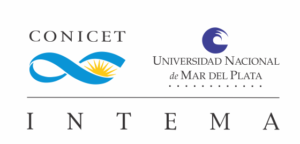The Division Catalysis and Surfaces was created with the institute in 1982. Since then, it has grown up in a sustained way over two big basic axes themes that gave origin to the two groups of investigation consolidated: ‘Surfaces and Interfaces´ and ´Catalysis and Engineering of Reactions’.
The group of Surfaces and Interfaces approach different themes related with interfacial phenomenon on semi-conductor surfaces. The main lines of work are: formation of nanostructures by growing and chemical attack; gas detection by films of metallic oxide; determination of diffusive, kinetic and balance parameters in porous media.
For its part, the group of Catalysis and Engineering of Reactions orient its work to the study and development of catalytic materials for its industrial and environment application and to the study of sustainable technologies for the removal of pollutants.
Their main lines of work are: synthesis, characterization and application of heterogeneous or absorbent catalysts; the operation and design of reactor; the development of technologies of liquid phases oxidation; the biological treatment of liquids effluents; the mathematical model of reactors and the determination of kinetic parameters.
Technological Offer
• Análisis por cromatografía líquida de alta resolución (HPLC).
• Monitoreo y control de gases tóxicos (CO, NO)
• Análisis de Carbono Orgánico Total (COT)
• Demanda Química de Oxígeno (DQO)
• Demanda Bioquímica de Oxígeno (DBO)
• Conductividad, Salinidad y Sólidos Disueltos Totales (TDS)
• Sólidos suspendidos volátiles (SSV) y sólidos suspendidos totales (SST)
• Índice volumétrico de lodos (IVL)
• Determinación de concentración de metales (cromo, cobre, hierro)
• Determinación de concentración de fenol/fenoles totales
• Determinación de concentración de peróxido de hidrógeno
• Tratamientos de oxidación avanzada para efluentes acuosos, tales como procesos Fenton homogéneo y heterogéneo, ozonización, tratamientos biológicos, catálisis enzimática.
• Determinación de capacidad de adsorbentes para la remoción de impurezas en agua.
• Diseño de filtros purificadores de agua.
• Análisis y caracterización de superficies a nivel nanoscópico.

